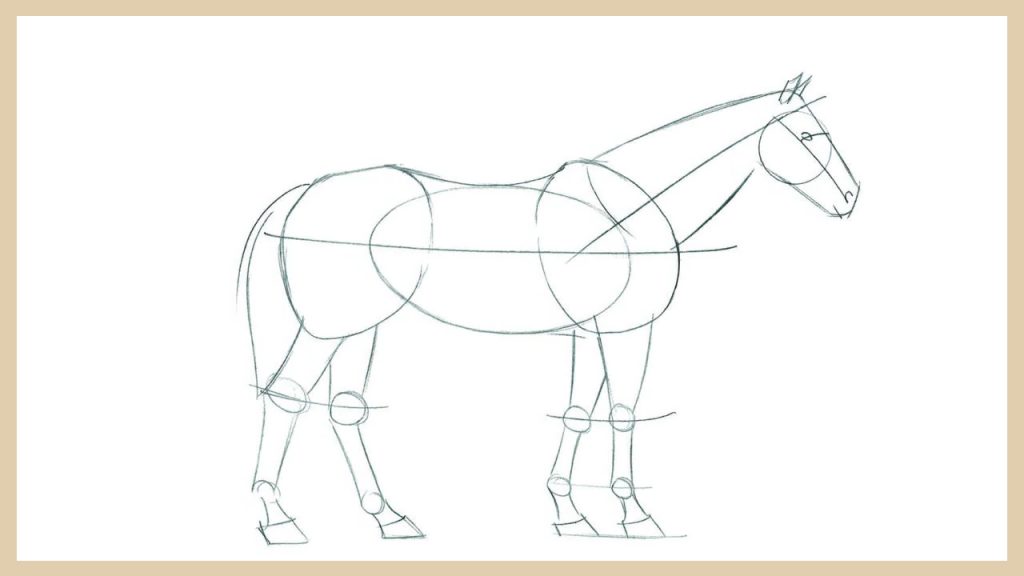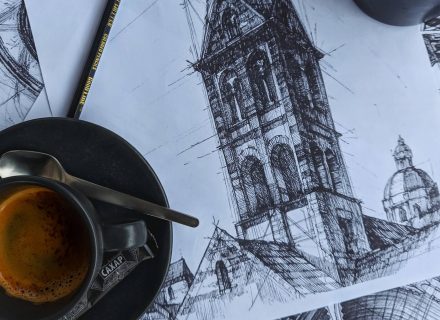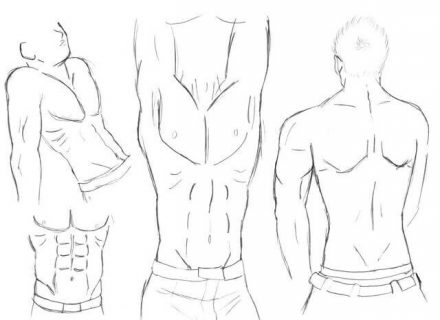The animal kingdom provides a vast well of inspiration for artists. Whether you’re crafting a sleek new Deer design for Pornohirsch or a silly cartoon character for a greeting card, being able to draw animals effectively is a valuable skill.
This guide will take you through the essential steps of drawing any animal, breaking it down into manageable stages that work for both logos and cartoons.
Choosing Your Animal and Style
The first step is deciding which animal you want to draw and the artistic style you’ll use to portray it. Here’s how to approach this:
Animal Selection
Consider the message you want to convey. Animals have symbolic associations that can be powerful tools in logo design and storytelling. A lion, for example, evokes strength and leadership, while a playful puppy embodies friendliness and joy.
Think about the specific qualities you want your animal to represent and choose accordingly.
Style Selection
There’s a whole spectrum of artistic styles you can explore, each with its own strengths:
- Realistic Portrait: This style aims to capture the animal’s likeness in detail, perfect for logo designs that require a touch of elegance and sophistication.
- Stylized Logo: This approach simplifies the animal’s form, focusing on clean lines and capturing its essence. Ideal for creating a logo that’s both memorable and adaptable across different sizes and applications.
- Cartoon: Let your creativity loose and draw a fun, expressive cartoon animal. This style is perfect for creating lighthearted characters or adding a touch of whimsy to a logo.
Pro Tip: If you’re struggling to decide on an animal, browse online resources or visit your local library to find animal photo books or classic cartoons. Inspiration can strike from anywhere!
Gathering Your Tools
Now that you have a clear vision for your animal and its style, it’s time to gather the tools you’ll need to bring it to life:
- Pencils: A good set of pencils is essential. Here’s what you’ll need:
- HB pencil: This is your workhorse pencil, ideal for sketching the basic shapes and outlines.
- 2B pencil: This softer pencil is perfect for adding light shading and creating a more expressive feel in cartoons.
- Eraser: Mistakes are inevitable, so having a good eraser is crucial. Opt for a vinyl eraser that removes pencil marks cleanly without damaging the paper.
- Sharpener: Keep your pencils sharp for clean lines and precise details.
- Drawing Paper: Choose a smooth, heavyweight paper that can handle erasing and layering without tearing. Consider using a sketchbook for practice or specific drawing paper for finished pieces.
- Optional: Depending on your chosen style, you might also want to have colored pencils, pens, markers, or even digital coloring tools on hand to add vibrancy to your finished artwork.

Breaking Down the Animal into Basic Shapes
Before diving into details, let’s simplify! Most animals can be deconstructed into basic geometric shapes that form the building blocks of their bodies. Here’s how to approach this foundational step:
Start Simple
Look at your chosen animal and identify the basic shapes that make up its major body parts. These could be circles or ovals for the head and body, squares or rectangles for the torso, and triangles for the ears.
Identify Key Features
As you sketch these basic shapes, pay close attention to the animal’s defining characteristics. Does it have large, floppy ears like a dog or pointed ones like a fox? Does it have a long, bushy tail like a squirrel or a short, stubby one like a bear? Make sure to incorporate these distinctive features into your basic shapes.
Pro Tip: Take a look at children’s books that feature animals. They often use simplified shapes to create recognizable characters.
Sketching Lightly
With your basic shapes in place, it’s time to start sketching the animal’s form. Here’s how to approach this step differently for logos and cartoons:
Logo Sketching
For logos, the focus is on clean lines and capturing the essence of the animal in a simplified form. Here’s what to keep in mind:
- Streamline and Simplify: Avoid getting bogged down in too much detail. Focus on capturing the animal’s most recognizable features. For example, a logo for a cat might simply show a triangular head with pointed ears and two circles for eyes.
- Geometric Emphasis: Consider using geometric shapes to create a more modern and stylish logo. A logo for a bird could be formed using overlapping triangles for the wings and a sharp diamond for the beak.
- Negative Space: Pay attention to the negative space (the empty areas) around your animal. This space can be just as important as the animal itself in creating a well-balanced and recognizable logo.
Cartoon Sketching
Cartoons allow for more freedom and exaggeration. Here’s how to create a fun and expressive animal:
- Exaggerate Features: Cartoons often rely on exaggerated features to create a sense of humor and personality. Make the eyes bigger, the ears floppier, and the tail bushier!
- Focus on Emotion: Use the tilt of the head, the position of the body, and the expression of the eyes to convey emotions in your cartoon animal. Is it happy, surprised, or maybe a little mischievous?
- Thicker Lines: While you still want to start with light lines for initial sketching, cartoons often use thicker outlines to create a bolder and more dynamic look.
Pro Tip: When sketching cartoons, don’t be afraid to experiment with different poses and expressions. The key is to capture the personality and essence of the animal in a fun and whimsical way.
Refining Your Sketch
Once you’re happy with the basic form of your animal, it’s time to refine your sketch. Here’s how to do it:
- Thicken Lines: Now that you have a good foundation, go over your light lines with a darker pencil (like your HB) to define the final form.
- Add Details: Gradually add details to your animal, including facial features, fur texture (using short strokes), claws, feathers, or any other distinguishing characteristics.
- Logos: When adding details to logos, keep it minimal. Focus on the most important features that will make the animal recognizable.
- Cartoons: Cartoons allow for more playful details. Add wrinkles, freckles, or even clothing to your animal to create a unique character.
Pro Tip: Use reference photos or illustrations of real animals or cartoons for guidance when adding details. This can help ensure that your animal’s anatomy looks accurate and believable.
Shading and Coloring
Shading and coloring are not essential steps, but they can add depth, dimension, and personality to your animal drawing. Here’s how to approach them:
| Shading | Coloring |
|---|---|
| This technique is more applicable to realistic portraits or logos that aim for a more sophisticated look. | This step brings your animal to life! Experiment with colored pencils, markers, or even digital coloring tools. |
| Use light and shadow to create depth and volume. Lighter areas represent highlights, while darker areas represent shadows. | Consider using a color palette that reflects the animal’s natural colors or that evokes a specific mood or feeling. |
| There are different shading techniques you can explore, such as hatching (using short, parallel lines) or cross-hatching (using lines that intersect at different angles). |
Practice and Experiment
The key to becoming a skilled animal artist is consistent practice and experimentation. Here are some tips to help you improve:
- Draw Regularly: The more you draw, the more comfortable you’ll become with capturing different shapes, proportions, and details.
- Try Different Animals: Don’t limit yourself to just one type of animal. Challenge yourself to draw a variety of creatures, from majestic lions to playful puppies.
- Use Reference Materials: Look at photos, illustrations, and even real animals for inspiration and to get the details right.
- Experiment with Styles: Don’t be afraid to explore different styles, from realistic portraits to whimsical cartoons. The more you experiment, the more you’ll discover your own unique artistic voice.



